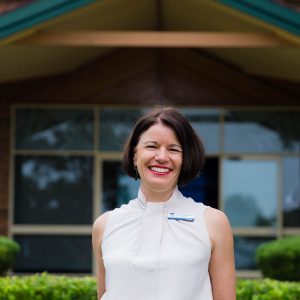Published on May 27, 2022
I acknowledge the Traditional Owners of the land on which I work, the Wonnarua People, and pay my respects to Elders past, present and future.
Anikanya (hello in Wanarruwa Language) to our community.
Thursday 26th May marked National Sorry Day, or the National Day of Healing, and today is the start of Reconciliation Week. As an expatriate who left Australia in 2003 and returned in 2021, I am inspired by how far we have come as a nation in recognising the impact of our colonial history. As a nation we seem more willing to listen and walk with our first nations people and, most importantly, acknowledge that being “on country” is key to healing.
But how many of us forgot about Thursday? How many of us missed an opportunity on Thursday to pause, reflect and feel the power of saying sorry as a first step towards reconciliation?
The National Day of Healing is about remembering and acknowledging the The Stolen Generations:
“National Sorry Day is a day to acknowledge the strength of Stolen Generations Survivors and reflect on how we can all play a part in the healing process for our people and nation…. We cannot begin to fix the problems of the present without accepting the truth of our history. Sorry Day asks us to acknowledge the Stolen Generations, and in doing so, reminds us that historical injustice is still an ongoing source of intergenerational trauma for Aboriginal and Torres Islander families, communities, and peoples.” (source)
What does it mean for us as a community to be part of this healing process? I agree that it starts with us “accepting the truth of our history” and recognising that the injustices experienced by the stolen generation create deep-seated trauma that moves through generations. However, it goes beyond acknowledgement to creating the spaces to talk, to say sorry and to feel compassion for those who have suffered.
I have always loved history, partly because I love stories and I believe history is about uncovering evidence and building that into a coherent narrative about what happened and why. At school in Tasmania, I studied Australian aboriginal history just once and this was in Year 9. In that class I was told that there were no more aborigines in Tasmania. I read in a textbook that the last Tasmanian aborigine was Truganini and she had died in 1876. I believed that story, but couldn’t quite reconcile it with the reality of the aboriginal family who lived in a neighbouring suburb. Nor did it make sense when the father of one of my best friends was aboriginal. The facts were inconsistent, but the textbook “facts” formed a convenient truth which meant nobody had to question or engage with the darker side of Tasmanian history. Ironically, teaching the history of Tasmania as a penal colony was fine, but exploring the impact of this colony and seal hunting on indigenous Tasmanians was not.
Intuitively I knew this information wasn’t quite right, but no teachers (or other adults in my life) provided me with an alternative narrative.
Later, as a good history student, I read and read. At university I sought out alternative narratives. I debated ideas and felt shame at my own ignorance. I discovered Henry Reynolds, a great historian who wrote about the Black Wars in Tasmania. I read about George Augustus Robinson, labelled the Chief Protector of Aborigines in Tasmania, and how he manipulated Truganini and Woorrady (Truganini’s husband). Robinson asked both of them to accompany him on a circumnavigation of Tasmania so that he could preach Christianity and convince aboriginal Tasmanians to move off country to Flinders Island in Bass Strait. Most who went to Flinders Island (either by force or through coercion) died from imported European diseases and from the loss of connection to the land that sustained them. Tribes were brought together on Flinders Island who were not kin and family units were destroyed. It decimated the aboriginal population in Tasmania and led to the mythology that all had “died out”.
Once I decided to become a teacher, I knew I wanted to be a different history teacher to those who had taught me at school. I wanted my students to think critically, to challenge their assumptions (and those of others) and not be afraid to do either. I wanted them to question authority (respectfully of course) and be welcoming of those who think differently to themselves. As an English and History teacher, I also wanted my students to have a profound understanding of the power of language to unite and divide.
Over time, I have also learnt more about the power of saying sorry, of acknowledging my mistakes (both big and small) and working towards repairing relationships that have fractured based on those mistakes. Repairing involves sitting with and listening to those I have harmed – not speaking for them or assuming I know how to repair their hurt – and doing this with humility and compassion. Repairing also involves knowing when to speak and advocate for change and what is right, and when to sit back and empower others to find their own voices and provide a platform on which they can speak.
As a white Australian woman who is firmly middle class, honouring National Sorry Day and Reconciliation Week is about saying that I (and we at HVGS) value and recognise the healing that needs to happen. And that we want to walk on this journey and are committed to telling the stories that need to be told, not only those that make us feel comfortable.
I know a different story of Tasmania’s history now and, as uncomfortable as that makes me, I will not forget it and I’ll tell it where I can. It reminds me that we must help our young people stay informed, stay “factful” and that our lives are richer when we pursue truth, understanding and reconciliation.

